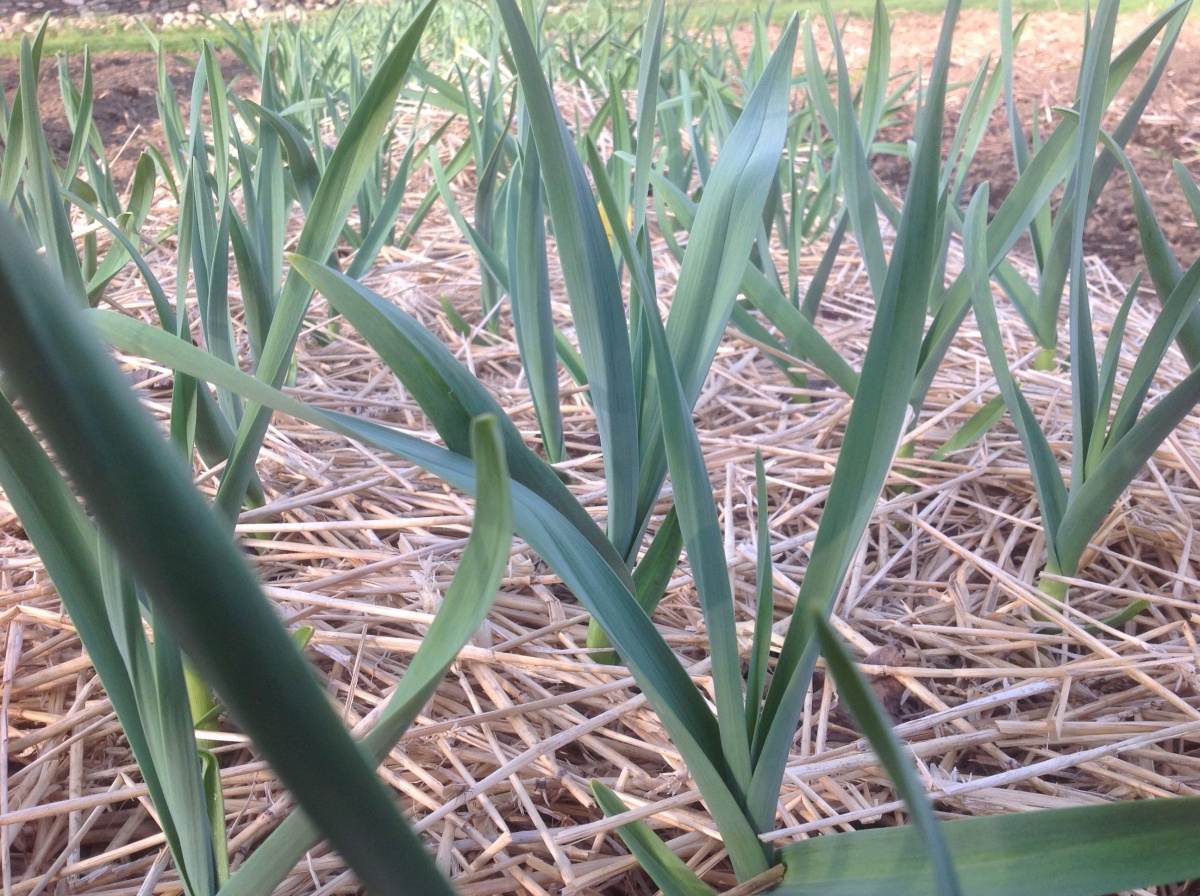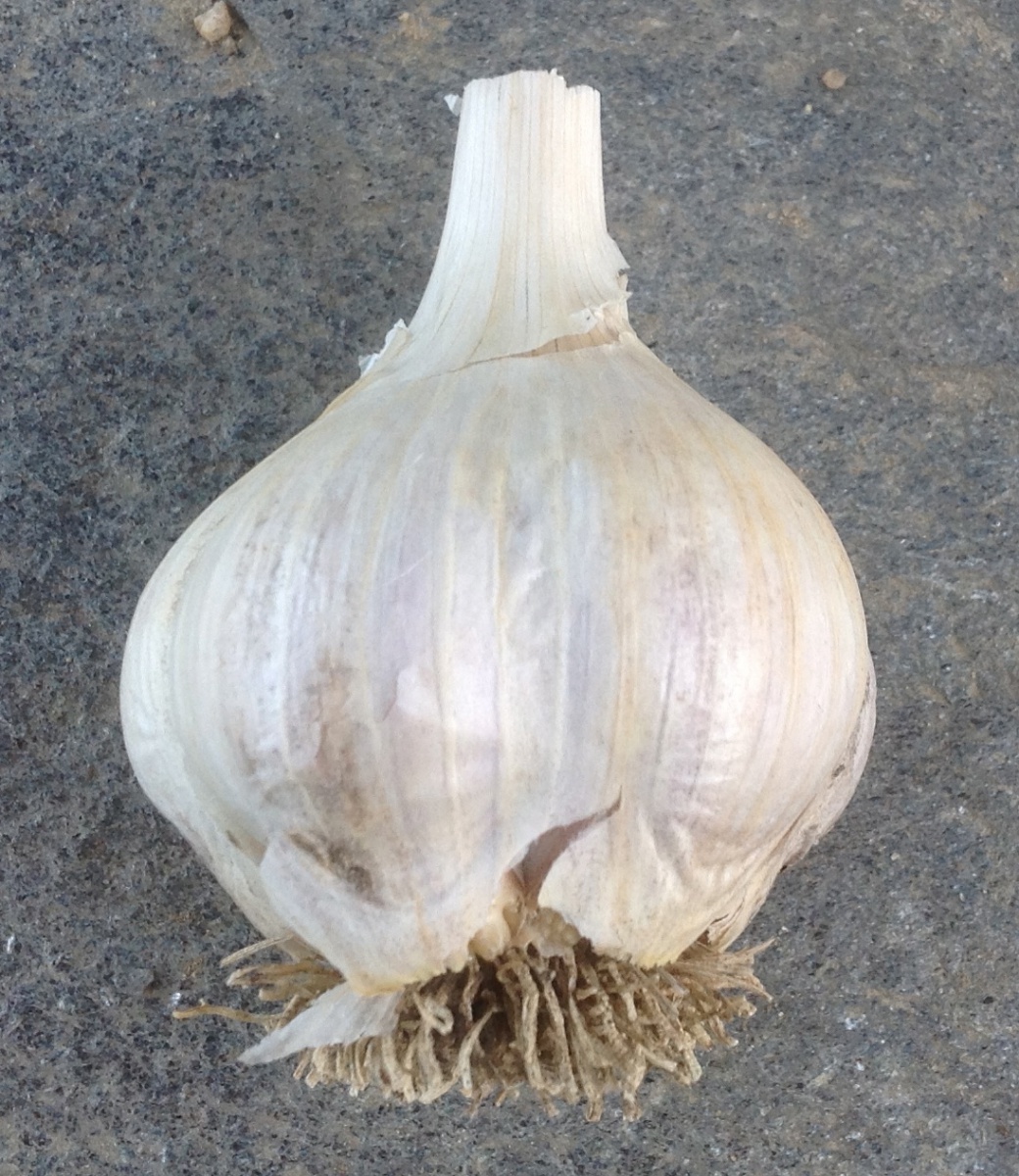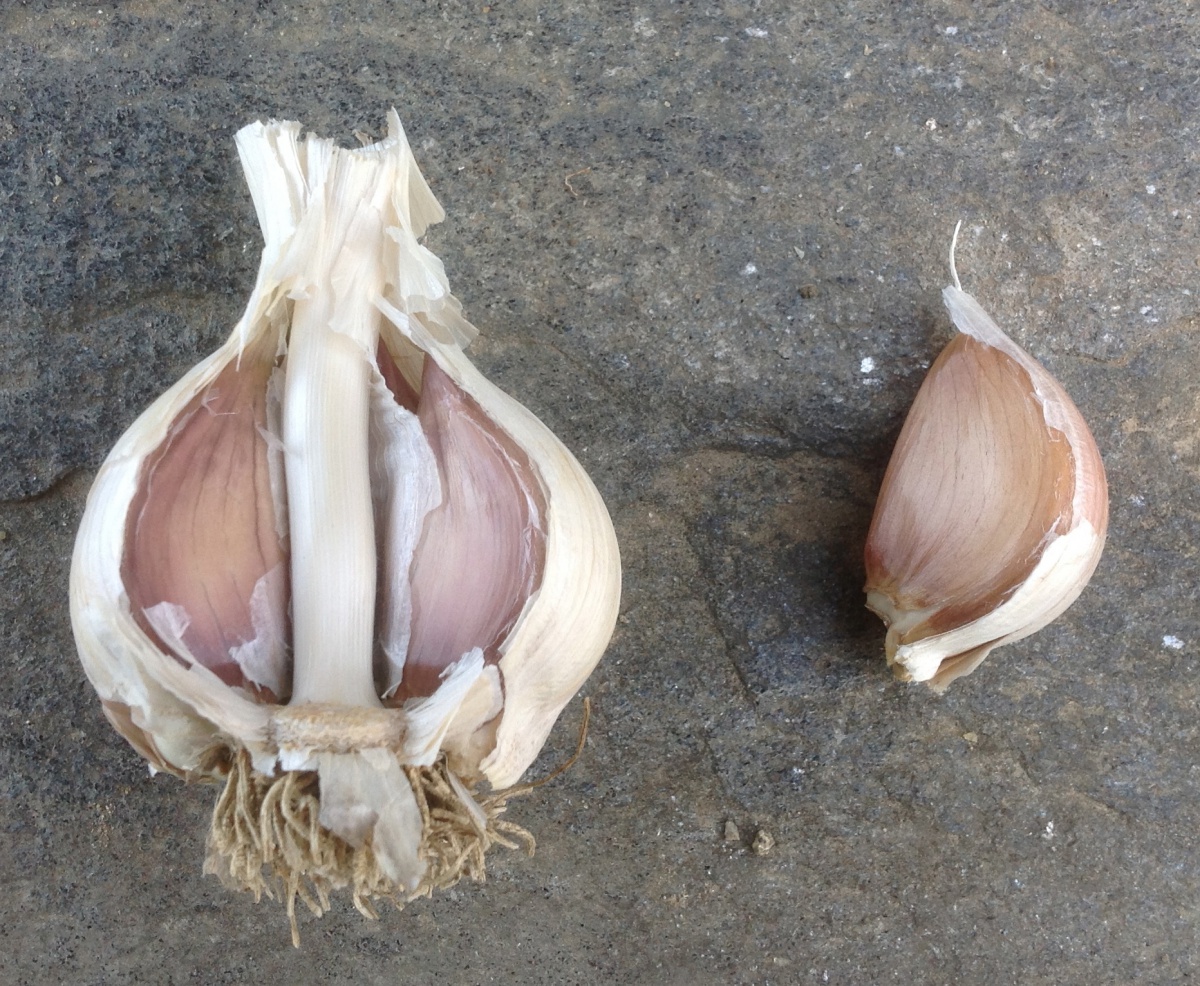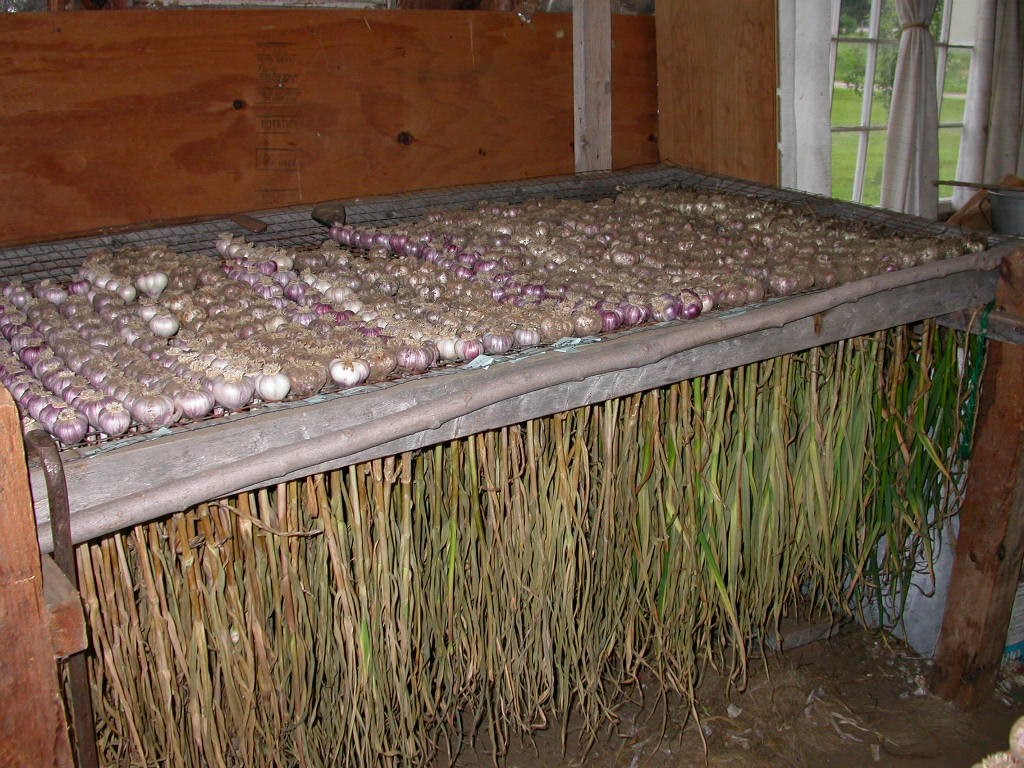Garlic is one of the easiest and most satisfying crops for home vegetable gardeners to grow. It yields two useful crops; the garlic bulbs themselves, and delicious green “scapes” a month earlier. Because it is usually planted in the fall and begins to grow early in the spring, garlic provides the garden with something green and encouraging, long before other crops have germinated.
About Garlic
Garlic (Allium sativa) is a member of the onion family. Garlic varieties are classified into softneck and hardneck (also known as topset) varieties. Hardneck varieties produce a false flower stalk called a scape, and generally produce fewer, larger cloves than softneck varieties. As a general rule, hardneck varieties are hardier and better able to withstand our cold winters than softneck varieties. Softneck varieties are required if you plan to braid your garlic.
Starting Materials
Garlic doesn’t produce flowers or seeds. The individual clove from heads of garlic are separated and planted. Garlic purchased in supermarkets is usually softneck garlic. These cultivars are not necessarily well adapted to our climate. You can purchase seedstock from local farmer, or from seed suppliers that will ship seed garlic. Plant only clean seed; any cloves showing evidence of mold or other damage should be discarded. If you are saving your own garlic seed stock, set aside the largest, best-shaped heads for seed and eat the smaller heads.
Varieties that consistently do well in Northern New England include ‘Music’, ‘German Extra Hardy’, and ‘Russian Red’. Varieties are not standardized, and they evolve with selection, so the same variety purchased from different sources may perform differently. Locally produced seed garlic is often a good way to start, since you can be assured that the varieties will do well in your climate.

Soil Preparation
Garlic requires reasonably fertile soil and grows best in a welldrained soil with plenty of organic matter. The pH of a typical vegetable garden, 6.0-7.0, is ideal for garlic. Follow soil test recommendations based on your garden site. If you don’t have soil test results, apply two pounds of a 10% nitrogen fertilizer (such as 10-10-10) per 100 square feet before planting. In the early spring, once the garlic has started to grow, garlic will benefit from additional fertilization with a liquid feed.
Planting
Garlic grows well in cool temperatures. In Northern New England, garlic is most successfully planted in the fall. The ideal planting time ranges from October (for Northern sites) to November (for more Southern sites). As with fall-planted flower bulbs, it is best to allow enough time for the bulbs to start to grow roots but not long enough for the shoots to start to grow before winter. If shoots start to grow in the fall, don’t worry. In most cases, the garlic will survive the winter and emerge unscathed in the spring.
Individual cloves should be planted, pointed-side up, 2 to 3 inches deep. Cloves can be planted in rows or in beds of several rows, but there should be at least 6 inches of space between neighbors on all sides. Remember that each clove will become an entire head of garlic! Once the ground is frozen, add mulch to prevent frost-heaving and to control weeds the next spring. A 4-inch layer of grass clippings, leaves or straw will work well. In the spring, make sure the plants are able to emerge through the mulch. If you can see that some are not making it through, you can poke around and loosen up the mulch to help them.
Did you miss fall planting? Although not as reliable as planting in the fall, if the weather is favorable, cloves planted in the very early spring (March-April) can develop into mature heads for a mid-summer harvest. If you have sprouting cloves from garlic you have overwintered, go ahead and plant them – you have very little to lose!


Harvesting and Storing
Usually during June, hardneck garlic plants send up a false flower stalk, or “scape.” This stalk is straight when it emerges, it then curls around to form an attractive swirl shape, and finally it straightens again. At the top of the scape, where you would expect to see a flower, garlic will instead form many tiny bulbs called “bulbils.”
Most growers remove the scapes when they curl. This is for two reasons. First, removing the scapes will allow larger garlic heads to form, because the plant will have more energy to send to the head. Second, the scapes themselves are a delicacy. They have a mild garlic flavor when cooked, and a strong garlic flavor when eaten raw. They can be used in the same way that garlic is used, but also make wonderful stir-fries and garlic-scape pesto. Scapes are most tender if harvested before they straighten.
The garlic bulbs are ready for harvest when the lower third of the leaves on the plant have turned yellow, usually between late June and mid-July. Gently loosen the bulbs by using a fork or spade underneath them, and gently brush off excess soil. Be careful not to bang the garlic around during harvest or curing. Any wounds or bruises predispose the garlic heads to disease during storage.
Place the garlic, with tops intact, in a dry location with good ventilation (attics, garages, and barns work well) to cure for several weeks. Once the garlic is dry, cut the tops down to about 1 inch in length, trim the roots, and gently rub to clean them. Garlic should be stored in a cool (just above 32°F), dry location. Depending on the variety and storage conditions, garlic will keep for 6 to 7 months.

Pests and Problems
Viruses, nematodes and fungi are the most common pests that plague garlic. All can negatively affect the yields and keeping quality of garlic. For all of these, prevention is the best strategy to minimize these problems. Start with clean seedstock, avoid growing garlic in wet areas or in exactly the same spot of soil from year to year, and be gentle during harvest and curing.
Download the Resource for the complete fact sheet and a printable version.
